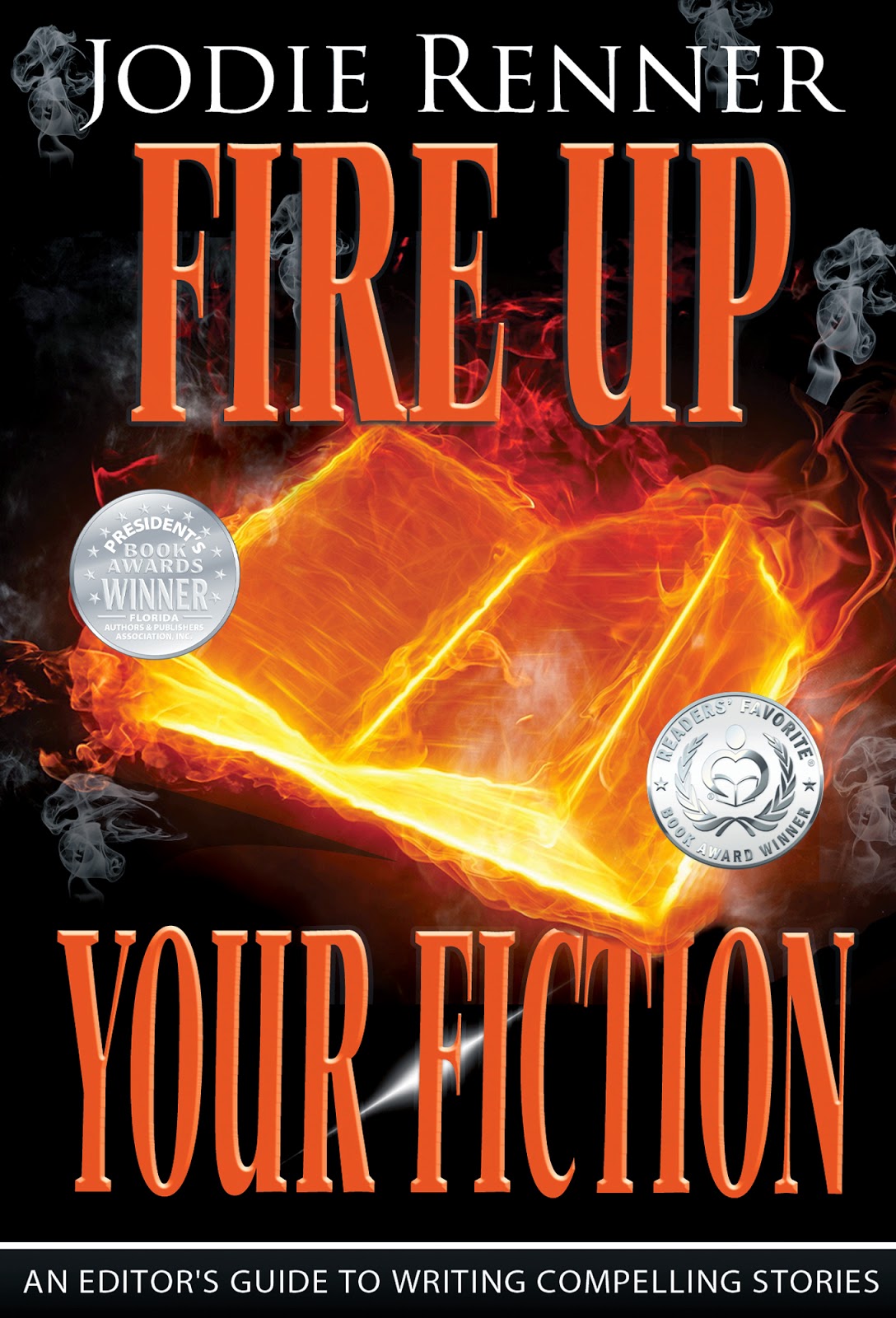
by Jodie Renner, editor, author, speaker
Follow Jodie on Twitter.
Often, the first thing I have to do when I receive a manuscript for potential editing, before starting my sample edit, is to reformat it, so it’s easier for me to read. Here are some guidelines for formatting your manuscript before submitting it to a freelance editor, a formatter, a contest, an agent, or a publisher. Most of these instructions are for Microsoft Word, 2007 or later.
1. For editing, your manuscript needs to be in Microsoft Word (Microsoft Office). This is a must, as almost all editors use Word’s Track Changes.
2. Send the manuscript as a .doc or .docx, unless instructed otherwise. Some contests prefer or require rich text format (.rtf) or even plain text (.txt), but most submissions want .doc or .docx documents.
3. The preferred font is Times New Roman. It’s easier to read than many other fonts.
The font size should be 12-point.
4. To change the font and size for the whole manuscript instantly, click Control + A (for All) at the same time, which highlights the entire manuscript, then change the font and size by using the toolbar on “Home,” and then click “Enter.”
5. Left-justify the text, rather than justifying both sides. That way, it’s easier for the editor to spot spacing errors. That means the text is lined up straight down the left side (except for indents), but the right side is jagged, depending on the length of the last word in the line. To do that, click Control + A, then click the left-justify icon on the toolbar along the top (Click tab for Home first). You can also do that by clicking on the little arrow to the bottom and right of “Paragraph,” then click on the down arrow beside “Alignment” and click on “Left.”
6. Use only one space between sentences, not two. Two spaces between the period and capital went out with manual typewriters.
7. Do not press “Enter” at the ends of the lines to add an extra line-space between the lines (to double-space the document). This is a HUGE no-no! It causes major headaches and a lot of frustration. As soon as a few words are added or deleted (which is what editing’s all about), everything screws up. So make sure that when you’re typing and you come to the end of a line, do not press “Enter” unless it’s for a new paragraph. Let the text “wrap” around on its own.
8. A quick and easy way to double-space your whole manuscript: Control + A (for “all”), then Control + 2 (Click on Ctrl and on 2 at the same time). Voilà! It’s done! To go back to single-spacing later, Click Ctrl+A, then Ctrl+1.
9. To see at a glance all kinds of formatting errors, click on the paragraph symbol on the toolbar along the top. It’s called a “Pilcrow” and it looks like a backward “P”. Here it is: ¶. You’ll see dots where spaces are and a ¶ for every hard return (Enter), at the end of a paragraph or for an empty line space between paragraphs.
10. Correct spacing between sentences. Click on that ¶ symbol again to see a dot for every space (click of the space bar). If you have two (or 3 or 4) dots instead of one between sentences (between the period and the next capital), you need to take out the extra spaces and just have one space between sentences. You can fix that for the whole manuscript in a second or two by using Find and Replace. Click on “Replace,” then after “Find what” hit the space bar twice (if you have 2 spaces). Then after “Replace with” click the space bar once. Then click on “Replace all” and Voilà again! All fixed!
11. Correct line-spacing and paragraphing: Click on that ¶ symbol in the toolbar again. You’ll see the pilcrow symbol ¶ at the end of every paragraph, to indicate a hard return (“Enter”), and then again at the beginning of a line-space. If you see the ¶ at the end of every line, all down the right margin, that’s a real problem – the biggest formatting mistake of all! You need to remove those pilcrows (returns) at the end of every line, either by using your “Delete” or “Backspace” keys before or after them, or by doing a “Find and Replace.” After “Find” you type in this: ^p (for the pilcrow or paragraph mark). After “Replace” you just hit the space bar once, to replace the carriage return with a space.
When you click on that backwards “P”, also look for extra dots at the beginnings of paragraphs, before the first indented word, and take them all out. There should just be the indents, with no extra dots in front of them.
Note that you should only see the pilcrow ¶ in two places – at the end of a paragraph, and on any blank line. If you see a ¶ anywhere other than those two locations, it’s misplaced and will probably cause some type of inadvertent mischief.
12. Paragraphing for fiction: For fiction manuscripts, don’t add an extra line-space between paragraphs. Just leave it at your normal double-spacing. Press “Enter” at the end of the last paragraph, then indent the new paragraph (0.3 to 0.5 inch) using the built-in paragraph styles. Do not indent paragraphs by using the Tab key or the spacebar. This only causes problems that will have to be fixed by you or someone else (at your cost). (See #15 below for instructions on how to indent the right way.)
13. Paragraphing for nonfiction: Nonfiction usually uses block formatting, with no indents for new paragraphs but instead an extra space between paragraphs.
14. General rule for indenting and spacing paragraphs: If you indent your paragraphs, don’t leave an extra space between paragraphs; if you don’t indent, insert the extra space between paragraphs.
15. How to indent the first line of each paragraph:
Do not press Tab or click repeatedly on the space bar to indent!
Click on that pilcrow again ¶ and if you see 2-7 dots at the beginning of the paragraph, you’ve used the space bar to indent. That’s another big no-no, and a bit of a headache to fix, especially if you don’t always use the exact same number of spaces.Using the “Tab” key to indent paragraphs is also a big no-no. If you’ve done that, you’ll see an arrow at the indent. It’s important to indent for the first line of a new paragraph by using Word’s formatting. To do this for the whole manuscript at once, use Control + A (for All), then, in the toolbar along the top, click on the little arrow to the bottom right of “Paragraph” (in Word 2010), then under “Special” click on “First line,” then 0.5" or 0.4" or 0.3". Don’t go for less than .2" or more than .5".
16. To center your title and chapter headings, do not repeatedly click on “Tab” or the space bar.
Again, if you click on the pilcrow (¶) and you can see a bunch of dots in front of the title, you’ve used the space bar to get it over there in the middle. And don’t use the Tab key for that, either. Instead, highlight the title with your cursor, then click on the centering in the toolbar along the top, under the “Home” tab. Or go to “Paragraph” below that, and click on the arrow in the lower right corner, then go to “Alignment,” then click the down arrow and choose “Centering.” Or a quick trick is to place your cursor in the title you want to center, and simply click CTRL + C (at the same time), which will automatically center the paragraph (title) in which your cursor is located.
17. For extra line spaces between chapters, do not repeatedly click on Enter or Return. To force a page break at the end of a chapter (in Word 2010), place your cursor at the end of the chapter, usually on the line below the last sentence, then, in the toolbar along the top, click on the tab “Insert” then click on “Page Break.” In Word 2007, click on “Page Layout” in the toolbar, then click on “Breaks”, then on “Page.” Another quick trick? Press CTRL+Enter. This will give you a forced page break for the end of each chapter. Do not do this at the end of a normal page, only for the end of a chapter.
18. Your next chapter heading (chapter name or number) should start at least 3 line-spaces down from the top of the page.
19. For more advanced, specific formatting, read the guidelines set out by the agent or publisher. Or stay tuned for “Formatting 102,” to appear here at some future time.
20. And a few quick notes about formatting for dialogue:
Make a new paragraph for each new person talking. Also a new paragraph for someone else reacting to the previous speaker.
Comma after “said”: He said, “How are you?”
Comma at the end of the spoken sentence, where a period would normally go, inside the last quotation mark. “Come with me,” she said.
If you have any other questions about formatting your document, please use the comment boxes below.
Also, check out these three excellent blog posts on formatting, by others in the biz:
5 Book Formatting Mistakes to Avoid, by Chandler Bolt:
http://self-publishingschool.com/5-book-formatting-mistakes-to-avoid/.
First Steps in Formatting for Print by fiction editor Beth Hill.
Using Font Styles When Formatting for Print by Fiction Editor Beth Hill
Also, check out these three excellent blog posts on formatting, by others in the biz:
5 Book Formatting Mistakes to Avoid, by Chandler Bolt:
http://self-publishingschool.com/5-book-formatting-mistakes-to-avoid/.
First Steps in Formatting for Print by fiction editor Beth Hill.
Using Font Styles When Formatting for Print by Fiction Editor Beth Hill

 Jodie Renner is a freelance fiction editor and the award-winning author of three craft-of-writing guides in her series An Editor’s Guide to Writing Compelling Fiction: Captivate Your Readers, Fire up Your Fiction,and Writing a Killer Thriller. She has also published two clickable time-saving e-resources to date: Quick Clicks: Spelling Listand Quick Clicks: Word Usage. Jodie recently organized and edited two anthologies for charity: a BC-wide anthology of stories and poetry for Doctors Without Borders, called Voices from the Valleys, and Childhood Regained – Stories of Hope for Asian Child Workers,created to help reduce child labor in Asia, with proceeds to SOS Children's Villages. You can find Jodie at www.JodieRenner.com, www.JodieRennerEditing.com, and on Facebook, Twitter, and Google+. Click HERE to sign up for Jodie’s occasional newsletter.
Jodie Renner is a freelance fiction editor and the award-winning author of three craft-of-writing guides in her series An Editor’s Guide to Writing Compelling Fiction: Captivate Your Readers, Fire up Your Fiction,and Writing a Killer Thriller. She has also published two clickable time-saving e-resources to date: Quick Clicks: Spelling Listand Quick Clicks: Word Usage. Jodie recently organized and edited two anthologies for charity: a BC-wide anthology of stories and poetry for Doctors Without Borders, called Voices from the Valleys, and Childhood Regained – Stories of Hope for Asian Child Workers,created to help reduce child labor in Asia, with proceeds to SOS Children's Villages. You can find Jodie at www.JodieRenner.com, www.JodieRennerEditing.com, and on Facebook, Twitter, and Google+. Click HERE to sign up for Jodie’s occasional newsletter.
Post a Comment